Does Firewood Splitting Drill Bits Work?
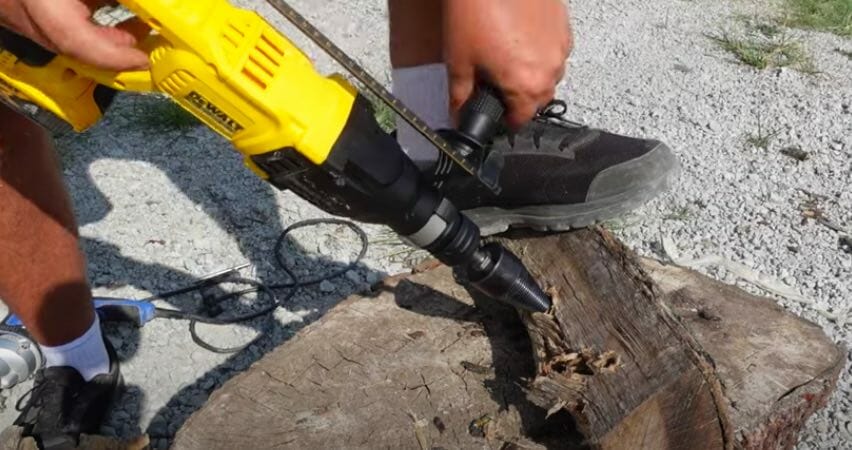
If you’re thinking of using a firewood splitting drill bit to split firewood, you might wonder if they work; ill go into more detail in my article below.
You could use an axe to split firewood, but it would require much more effort or a gas-powered firewood splitter which takes time. We will test a new conical drill bit specially designed for splitting firewood to see how effective it is.
Firewood splitting drill bits can be somewhat effective, but they are designed to fit a rotary hammer drill, although they can also fit in ordinary power drills. We will follow the experience of a woodcutter from a YouTube video who tested this drill bit on firewood but using an ordinary power drill first.
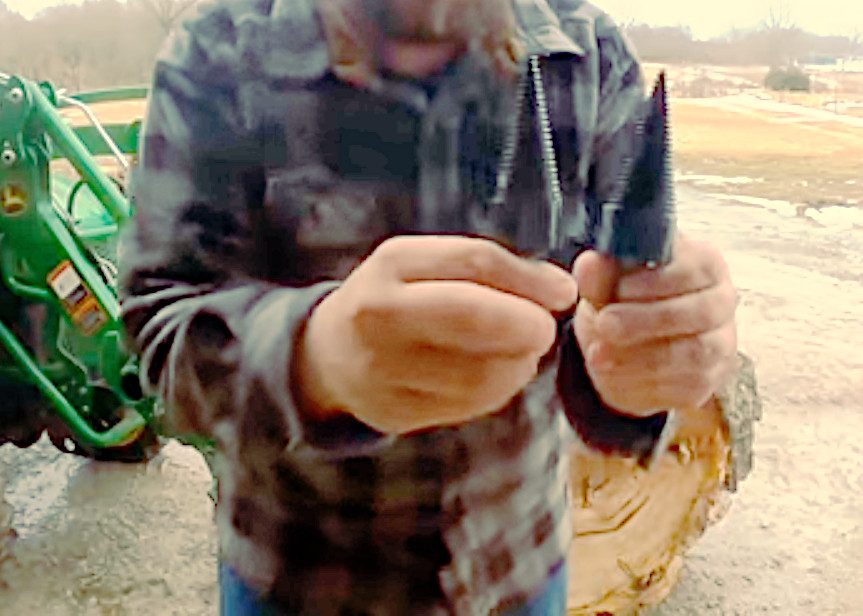
Splitting Firewood Using an Ordinary Power Drill
The woodcutter first used a chainsaw to cut the firewood into manageable pieces.
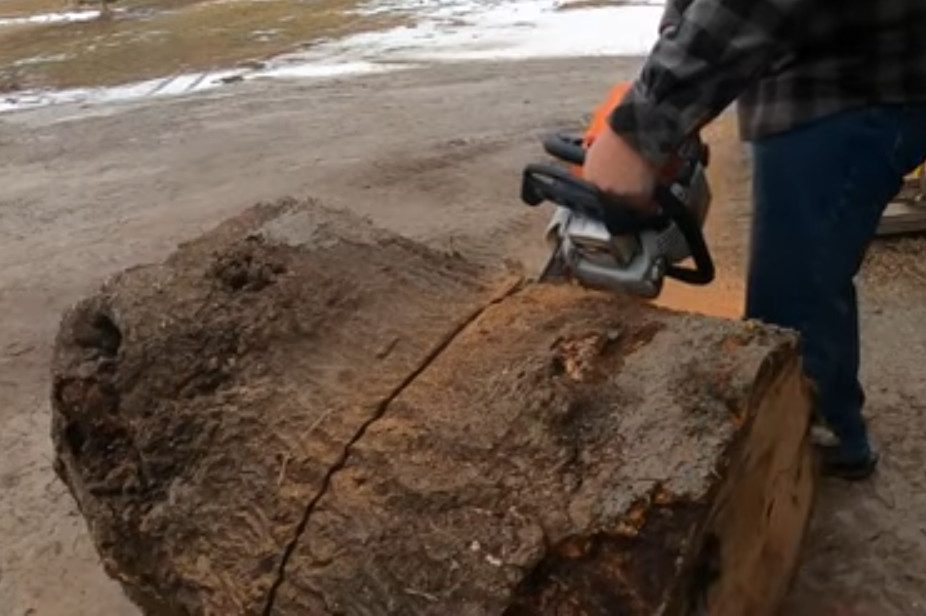
Remember to drill close to an edge. Here, you can see that he managed to split a small test piece by drilling close to one edge (see picture below).
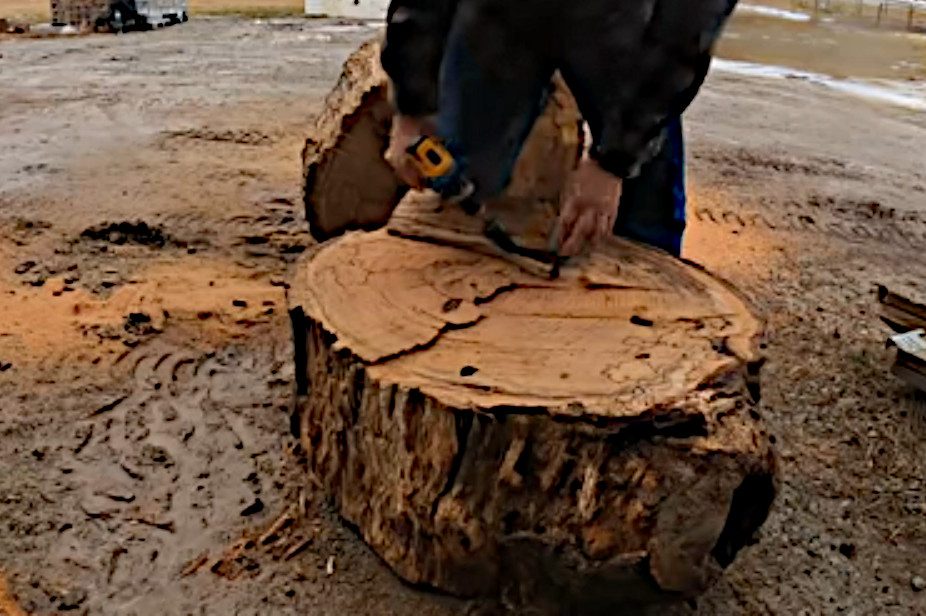
You may find that a cordless drill is not powerful enough for drilling into firewood. You can achieve a better result by taking the firewood to a place where you can use a corded drill instead. The firewood should split more easily. Using a corded power drill, the woodcutter achieved this (see picture below).
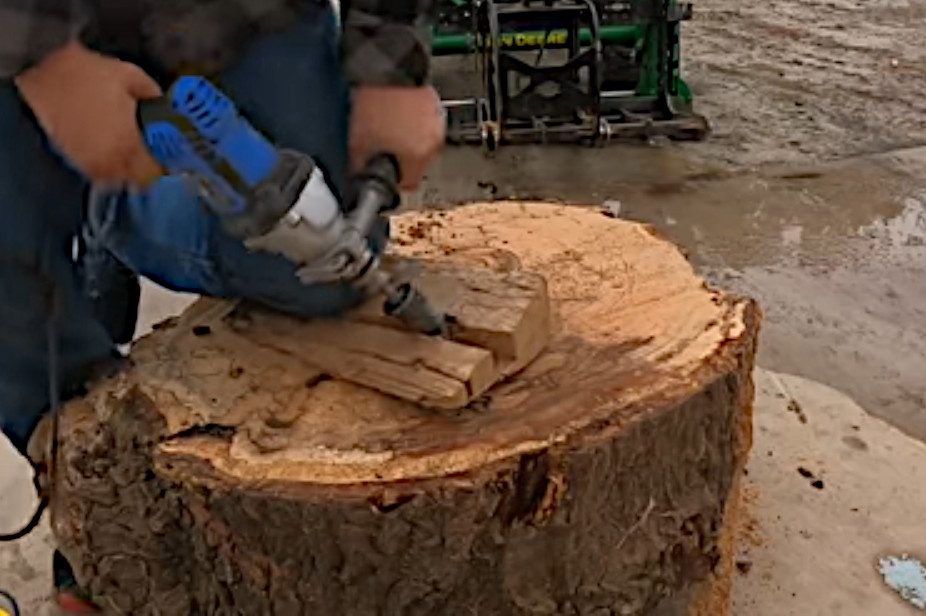
Once satisfied with drilling the test piece, you can start drilling into the main block. Remember to drill close to the edge, no more than around 1-2” away; otherwise, there is a risk of the drill bit getting stuck. Also, be very careful to hold the piece of wood in place, as it could end up spinning, which could be dangerous.
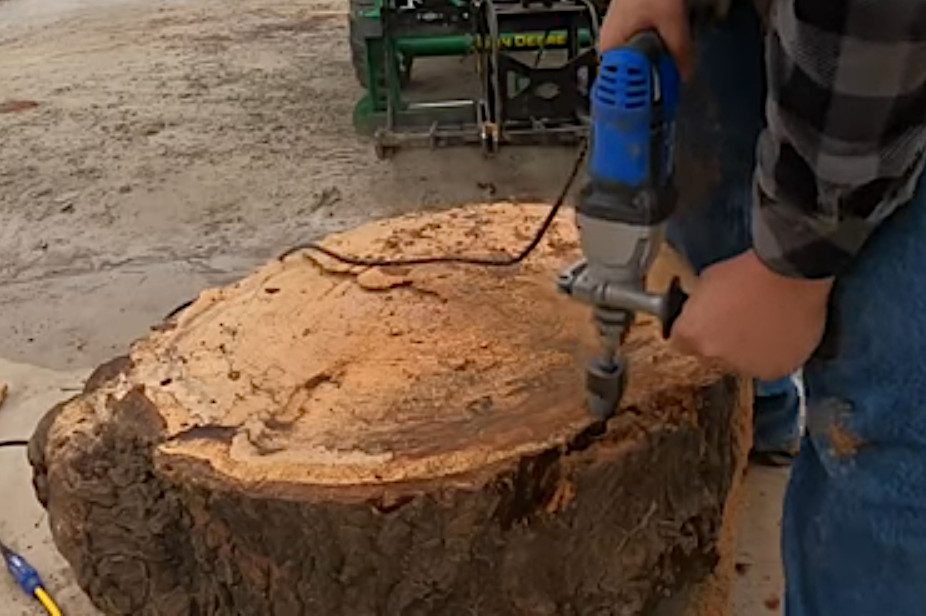
If you drill too far away from the edge, such as 3” away, the drill bit will likely get stuck, and you will have to use a wrench to get it out. In the case of this woodcutter, the drill bit came off and got stuck when drilling 3” from an edge.
Splitting Firewood Using a Hammer Drill
The SDS shank of the firewood splitting drill bit is designed to fit securely in a hammer drill (see picture below).
This eliminates the possibility of the drill bit coming off or separating from the drill and getting stuck in the wood. The woodcutter made a follow-up video in which he repeated the experiment using a hammer drill, although it was cordless, not corded.
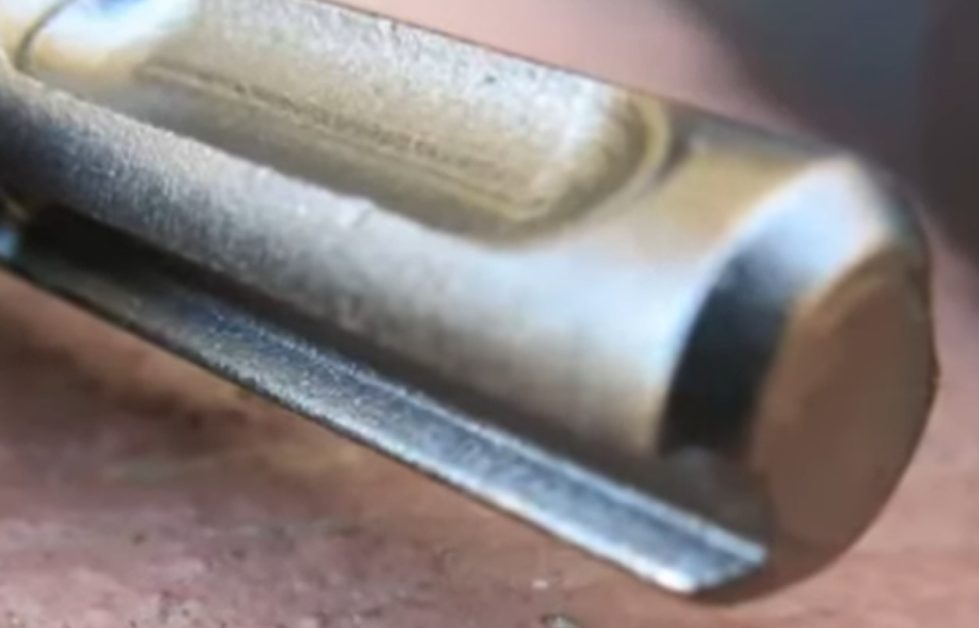
You may find that better results can be achieved by using a hammer drill.
The firewood splitting drill bit with an SDS shank will fit perfectly without the risk of coming off, and you will find it easier to split the wood. Still, it’s better to drill close to the edges.
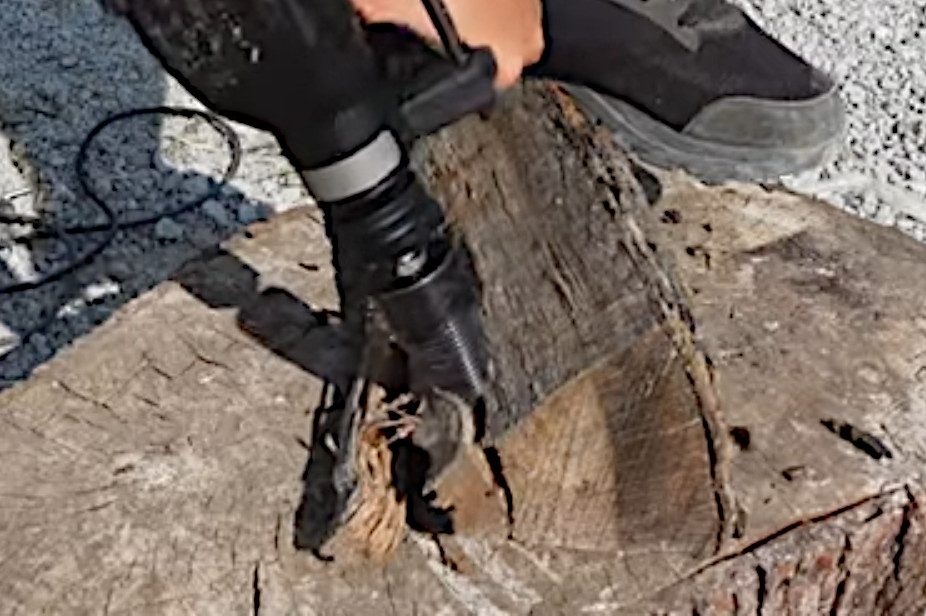
You may find the hammer setting on the drill is generally more suitable for drilling into firewood than the normal mode.
Wrapping Up
The firewood-splitting drill bit is not perfect, as the man in the video showed. It can do its job if you only drill close to an edge. Otherwise, the drill bit can easily get stuck. Some users also report a better result when the firewood is dry than wet firewood and working on smaller pieces of wood.
Since the SDS shank of the firewood splitting drill bit is made to fit a hammer drill rather than an ordinary non-hammer drill, use a hammer drill, preferably a corded one. Cordless drills are inadequate for this tool, whether a hammer or not. Using the firewood splitting drill bit on ash or aspen instead will probably work easier too. But a regular gas-powered firewood splitter can probably do a better job for firewood.
In conclusion, you might find that this firewood splitting tool is more hassle than convenient.
Our Recommendations
If you still prefer to try the new conical firewood splitting drill bit to split firewood, here is a roundup of things you can do to increase your chances of succeeding:
- Fit the drill bit into a corded hammer drill.
- Use on dry firewood.
- Drill close to the edges.
- Work on smaller pieces of wood.
- Avoid drilling into knots.
Appropriate drill bit size for a firewood splitting drill bit
The size of the drill bit also matters. The diameter of the log you are trying to cut will determine which size drill bit will be suitable for splitting it. Using the appropriate-sized drill bit could also allow you to drill further away from the edges.
We recommend using the drill bit size indicated in the table below. For example, a log with a diameter of approx. 12” (1 ft) would require a firewood-splitting drill bit with a diameter of at least 3” (3 inches). For larger logs with a diameter exceeding 16”, it would be better to use an auger instead. An auger is a large tool with a helical flange attached to a rotating shaft normally designed for boring into the earth. (1)
In other words, the conical firewood splitting drill bits are best used on logs less than 16” in diameter. (2)
| Diameter of Log (in inches) | 8″ | 12″ | 16″ | > 16″ |
|---|---|---|---|---|
| Diameter of the Drill Bit (min) | 2.5″ | 3″ | 3.5″ | > 4″ |
Take a look at some of our related articles below.
- What size drill bit for 1/4 tapcon
- What size drill bit for wall plug
- How to sharpen drill bits with a file
References
(1) boring into the earth – https://www.bbc.com/future/article/20190503-the-deepest-hole-we-have-ever-dug
(2) firewood – https://forestry.ca.uky.edu/drying-firewood
Video References
Rockhill farm
